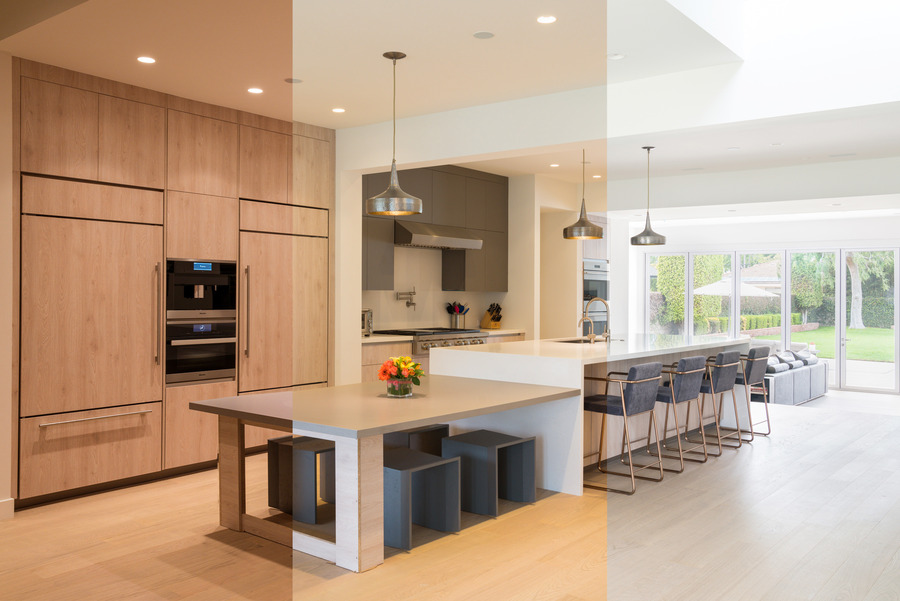Create a Healthier Home with Dynamic and Natural Light
Learn How Light Color Temperature Affects Your Well-Being

Good lighting in a home transforms a space, setting the desired mood while allowing you to perform the many tasks accompanying the day. It aligns ambient, task, and accent lighting to create a space of intrigue and draw the eye to your home’s best architectural features.
Great lighting considers the quality and color of the light and its profound effect on our well-being. It assesses how it affects our moods, emotions, and physiological responses. Light color temperature has been shown to affect almost every aspect of our being, from the health of our eyes to our moods and sleep cycles.
Fortunately, with today's dynamic, full-spectrum lighting, we can instantly change our home's lighting, creating spaces that offer relaxation, peace, increased energy, and enjoyment.
Let’s explore the world of revolutionary LED technology.
SEE ALSO: Why You Should Partner with a Lutron-Certified Installer
Taking Your Light’s Temperature
LED lights come in different color temperatures measured in kelvins, ranging from 1,000-10,000K. Warm colors range from 0-2,900K, while bright white lights fall in the 3,000-4,900K range. The cool colors start at about 5,000K. The lower the number, the more orange or yellow lights appear. At higher numbers, lights appear more blue or purple.
The color temperature of sunlight also changes during the day. At sunrise and sunset, it’s at about 2,000-2,700K and is equivalent to candlelight. This light encourages cozying up with a good book. By noon, on a clear day, it’s risen to 5,500K, the light that inspires productivity.
The Effects of Light
Light therapy studies have demonstrated that different light colors affect our moods, heart rates, and circadian rhythms—our sleep-wake cycle governed by changing daylight. A high color temperature triggers the release of serotonin, which enhances our energy levels and brightens our moods. Low color temperatures in the orange-red range start melatonin production, causing us to relax and become sleepy. Melatonin is also associated with boosting our immune systems and lowering cholesterol.
Varying colors of light have long been associated with changing moods, causing conscious and subconscious emotional reactions. Although reactions vary, some common correlations are blue to promote peace and tranquility, red for passion and action, green for strength, and yellow for cheerful dispositions.
Creating a Healthy Home
At Advanced Home Audio, our designers and engineers utilize advanced lighting systems to create homes that enhance wellness and beauty. Two of these systems are natural and full-spectrum lighting.
Natural lighting automatically changes throughout the day, imitating the changing color of daylight and supporting your circadian rhythm and sleep-wake cycle. Dynamic spectrum lighting offers every light in the visible light spectrum, enabling homeowners to change their lighting to suit their mood or lift their spirits.
Our team will program scenes that set the lighting with one touch. For example, tap the "Relaxation" button on an in-wall keypad, and your lighting shifts to azure, amethyst, gold, and indigo. Having friends over? Press the “Entertainment” button to transform the lighting to preset hues, stream music, adjust the temperature, and light the fireplace.
Are you ready to experience the remarkable world of today’s advanced lighting systems? To learn more about natural and dynamic lighting or to schedule a complimentary consultation, contact Advanced Home Audio today.